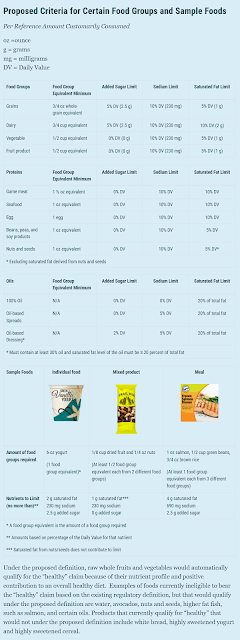The dairy and dairy alternative segment is unique in that you will find consumers buying a combination of both products throughout different categories, according to research from today’s blog sponsor: Synergy. Link HERE or on the banner ad to read Synergy’s five trends for 2023 in the dairy/alt dairy sector.
I would like to focus on one of the trends. That’s sugar reduction and it should be a priority for all dairy foods innovators if they want their products to be recognized as “healthy.”
The FDA’s proposed framework for the updated definition of “healthy” focuses on ensuring that nutrient-dense foods that help consumers to build a diet consistent with current dietary recommendations can qualify to bear the claim. Use of the word “healthy” in food marketing is voluntary. (Read more about making nutrient density a priority in 2023 HERE.)


To meet the proposed definition, a food product would need to contain a certain amount of food from at least one of the food groups or subgroups (e.g., fruit, vegetables, grains, dairy and protein foods) recommended by the 2020-2025 Dietary Guidelines for Americans. The specific limits for added sugars, saturated fat and sodium would be based on a percentage of the Daily Value for these nutrients. DVs are reference amounts of nutrients to consume or not to exceed each day. The proposed criteria for how much food from a particular food group is required (called food group equivalents) and the specific limits for the three nutrients vary for individual food products, mixed products (which contain more than one food group), main dishes and meals, and are based on a Reference Amount Customarily Consumed, which is the basis for determining a serving size.
FDA uses Greek yogurt as an example. Click on the infographic sourced from FDA for more details.
To read more about the proposed definition, link
HERE.
The good news is that over the past 20 years, which is about the time sugar became evil, the food industry has been able to stealthily get many consumers to prefer a less sweet taste. According to research from HealthFocus International, when decreasing sugar in the diets, more consumers prefer to reduce rather than replace with non-sugar alternatives or other flavors. Shoppers prefer less-sweet products over those that use non-sugar sweeteners or other substitutes.
That should help with decreasing added sugars in sweet dairy foods, especially “The 4 Best Dairy Foods to Eat Every Week, According to a Dietitian.” This article recently appeared EatingWell.com, which reaches an audience of more than 10 million monthly viewers as well as more than 5 million fans through its social media channels. You can link to the article
HERE.

Registered Dietitian Isabel Vasquez’s summary states: Despite many consumers turning to non-dairy alternatives, dairy products have a lot of nutritional benefits. With a variety of dairy options out there, including ones suitable for lactose intolerance, you can probably find something that works for you regardless of your dietary needs or taste preferences. It is especially worth adding dairy to your weekly intake for its highly bioavailable calcium, a nutrient important for bone health and the prevention of osteoporosis.
It’s a great time to be in dairy! But here’s some disappointing news.
According to FDA, about 15% of products qualify for the current definition of “healthy,” and less than 5% actually bear the claim. The agency further estimates that after the proposed improvements to the claim are implemented, only 4% of foods in the grocery store might carry the claim.
Formulate your products to be “healthy” claim worthy!




No comments:
Post a Comment